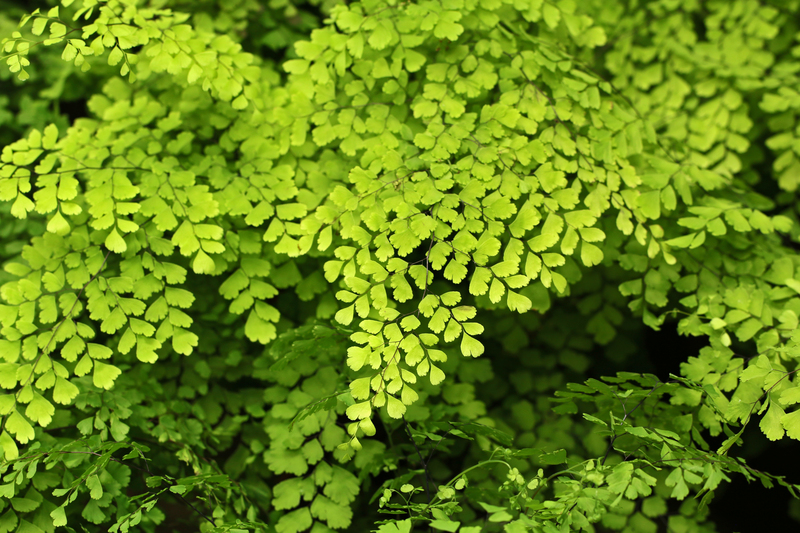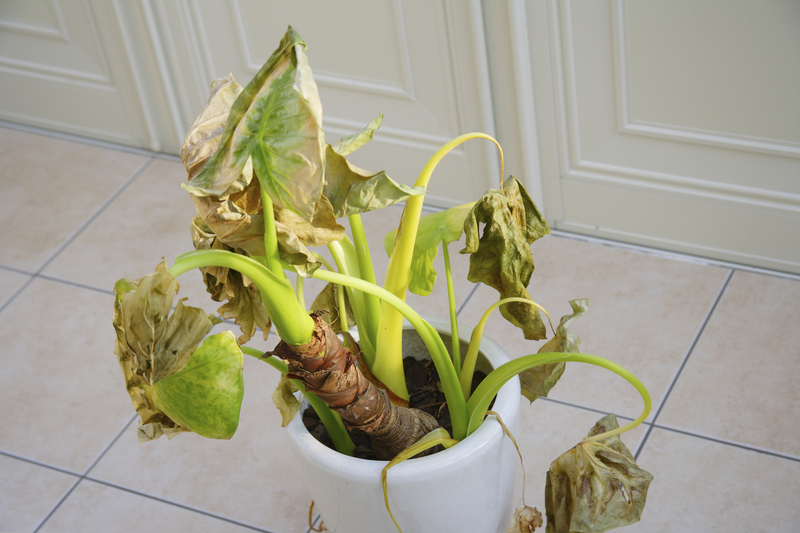Harnessing the Power of Waste for Nutrient-Dense Soil
Posted on 06/09/2025
Harnessing the Power of Waste for Nutrient-Dense Soil
Nutrient-rich soil lies at the heart of thriving gardens, robust crops, and healthy ecosystems. As the world seeks more sustainable solutions to agriculture and waste management, the concept of harnessing the power of waste for nutrient-dense soil has emerged as a key focus. By turning organic waste into valuable soil amendments, we can boost plant growth, enhance biodiversity, and tackle environmental challenges. In this in-depth article, we explore practical strategies, scientific insights, and the incredible potential of waste-to-soil transformation.
Why Nutrient-Dense Soil Matters
Nutrient-dense soil is the foundation for strong plant development, healthy root systems, and high crop yields. Soils rich in nitrogen, phosphorus, potassium, and an array of essential micronutrients enable plants to:
- Resist disease and pests more effectively
- Produce better-tasting and more nutritious fruits and vegetables
- Retain water, reducing irrigation needs
- Support vital soil organisms
Traditional methods of improving soil fertility often rely on synthetic fertilizers, but these can cause long-term environmental harm. By focusing on the reuse of waste to enrich soil nutrients, we simultaneously solve two major issues: waste disposal and soil degradation.

Types of Waste for Nutrient-Dense Soil
1. Kitchen Scraps and Food Waste
Millions of tons of food are discarded globally each year. Kitchen waste like vegetable peels, coffee grounds, eggshells, and even stale bread are packed with organic matter and nutrients. These scraps can feed soil microbes, improve texture, and supply much-needed minerals as they decompose.
2. Yard and Garden Waste
Grass clippings, leaves, and pruned branches are excellent sources of carbon and trace elements. Properly managed, these materials can transform compacted, lifeless soil into a soft, aerated medium teeming with beneficial life.
3. Manure and Animal Waste
Livestock manure is one of the oldest forms of soil amendment. Well-composted manure delivers a powerful dose of nitrogen, phosphorus, and potassium, along with organic matter. It also encourages the proliferation of earthworms and soil fungi, which are indispensable for nutrient cycling.
4. Agricultural Byproducts
Crop residues such as straw, husks, and shells are often burnt or disposed of, releasing harmful emissions. Instead, incorporating them into soil can add bulk organic matter, improve soil structure, and supply slow-release nutrients over time.
5. Industrial and Urban Organic Waste
With careful handling and proper treatment, certain industrial byproducts (e.g., brewery waste, spent mushroom substrate) and urban green waste can be safely integrated into soil systems. However, always ensure such materials are free from contaminants.
The Science of Composting: Turning Waste Into Soil Gold
Composting is the process that breaks down organic waste into humus, a rich, dark substance packed with bioavailable nutrients. This natural recycling method not only cuts down landfill volume but also creates an incredibly effective soil conditioner.
How Composting Works
- Decomposition: Microbes, fungi, and invertebrates feed on organic waste, breaking it down into simpler molecules.
- Heat Generation: As microbes work, they generate heat, which helps neutralize potential pathogens and weed seeds.
- Transformation: Over weeks or months, waste is transformed into crumbly, nutrient-dense compost.
Optimal composting depends on balancing carbon-rich ingredients (like leaves, wood chips, and straw--often called 'browns') with nitrogen-rich ones (food waste, manure, fresh grass--known as 'greens'). By regulating moisture and aeration, you support the microbial communities responsible for effective waste breakdown.
Benefits of Compost-Enriched Soil
- Water Retention: Compost boosts soil's ability to retain water and resist drought.
- Enhanced Soil Structure: Organic matter improves soil texture, making it easier for roots to grow and exchange gases.
- Nutrient Availability: Compost contains slow-release nutrients, facilitating consistent plant nourishment.
- Reduced Erosion: Compost-enriched soils bind together, resisting erosion from wind and rain.
- Biodiversity: The addition of organic matter increases earthworm and beneficial microbe populations.
Advanced Waste-to-Soil Transformation Techniques
Vermicomposting: Worms at Work
Vermicomposting uses specialized earthworms (like Eisenia fetida, the "red wiggler") to rapidly break down food waste into a nutrient-dense, biologically active product called vermicast. Vermicast is rich in plant growth hormones, enzymes, and beneficial microbes--a true superfood for soil. This process is odor-free and efficient, making it suitable even for small-scale and urban gardeners.
Bokashi Fermentation: Anaerobic Innovation
The Bokashi method involves fermenting organic waste with special strains of beneficial bacteria and yeast under anaerobic (oxygen-free) conditions. This technique quickly pickles waste, preserves nutrients, and prepares material for rapid decomposition once added to soil. Bokashi is ideal for handling meat, dairy, and citrus, which traditional composters might avoid.
Biochar: Charred Waste for Superior Soils
Biochar is a stable, carbon-rich material created by burning organic waste in a low-oxygen environment (a process called pyrolysis). When added to soil, biochar:
- Retains nutrients and water within its porous structure
- Reduces leaching of fertilizers
- Lowers greenhouse gas emissions by stabilizing carbon
- Provides habitat for soil microbes
Biochar is gaining attention worldwide for its ability to transform poor soils while sequestering carbon, helping to mitigate climate change.
Mulching With Waste Materials
Layering garden waste such as leaves, straw, or untreated cardboard directly onto the soil surface serves as a living mulch. This protects soil from erosion, moderates temperature, and as the mulch decomposes, it delivers a continuous supply of nutrients to the root zone.
Waste-to-Soil Success Stories: Real-World Examples
Urban Gardens and Community Composting
Cities like San Francisco, Toronto, and Milan have launched large-scale composting initiatives that turn curbside organic waste into soil amendments for parks, community gardens, and local farms. Studies show that these programs reduce landfill burden by up to 30% while restoring urban soils and supporting local food production.
Regenerative Agriculture and Circular Farming
Progressive farmers worldwide are adopting waste-reuse strategies--from integrating crop residues to rotating cover crops and recycling animal manure. These practices not only improve soil health, but also cut input costs and significantly enhance resilience to pests and climate extremes.
Home Gardeners: Closing the Loop
Backyard composters and small-scale vermiculture enthusiasts testify to the transformative effects of waste-derived compost. Lush vegetable beds, vibrant flowers, and bountiful fruit trees are just some of the rewards for those dedicated to building healthier soils.
How to Start Harnessing Waste for Better Soil
Step-by-Step Guide
- Collect Waste: Set up bins for food scraps, yard trimmings, and compostable materials.
Pro Tip: Avoid pet waste, diseased plants, and anything contaminated with chemicals. - Choose a Composting Method:
- Hot or cold composting for general waste
- Vermicomposting for fast turnaround and higher nutrient content
- Bokashi for tricky food items
- Manage the Pile: Mix greens and browns in a 1:3 ratio, keep moist, and turn periodically to aerate.
- Monitor Progress: Finished compost is dark, crumbly, and smells earthy--the gold standard for spreading onto garden beds or mixing into pots.
- Apply To Soil: Top-dress garden beds, mix into planting holes, or create compost tea for liquid feeding.
Best Practices for Healthy, Nutrient-Dense Soil
- Rotate Compost Ingredients: Ensure diverse inputs to support a broad spectrum of nutrients.
- Test Your Soil: Regular soil testing reveals nutrient gaps and helps optimize compost application rates.
- Minimize Tilling: Excessive tillage disrupts soil structure and microbial life. Focus on minimal disturbance.
- Integrate Cover Crops: Green manures and cover crops fix nitrogen, prevent erosion, and enrich soil between growing seasons.
- Keep Soil Covered: Living plants or mulches prevent nutrient loss and support a resilient soil ecosystem.
Potential Challenges and How to Overcome Them
- Odor and Pest Issues: Layer brown materials, maintain proper aeration, and avoid adding meats or fats without Bokashi treatment.
- Slow Decomposition: Chop up large scraps, keep the pile moist, and turn regularly for oxygen.
- Contaminated Waste: Use only clean, chemical-free organic materials and verify the safety of industrial byproducts.
- Heavy Metals or Pathogens: Finished, well-matured compost (especially from urban or manure sources) should be tested before large-scale use.
The Environmental Impact of Waste-to-Soil Initiatives
Reducing landfill waste via composting can dramatically lower methane emissions, a powerful greenhouse gas. By recycling organic waste, we:
- Cut pollution and landfill volume
- Store more carbon in healthy soils
- Reduce reliance on chemical fertilizers
- Enhance urban and rural green spaces
- Support local food production

Looking to the Future: Scaling Up Waste Reuse for Nutrient-Rich Soils
As awareness grows, communities, businesses, and policymakers are investing in infrastructures to recover nutrients from organic waste at scale. Innovative start-ups and local cooperatives are developing decentralized composting hubs, app-based food waste collectors, and digital marketplaces for upcycled soil conditioners.
Research and education are also pivotal--equipping farmers, urban planners, and individuals with the tools and know-how to implement waste-to-soil solutions on a broader level. New technologies such as smart compost monitoring, advanced microbial inoculants, and automated vermiculture promise to make the process even more efficient and user-friendly in the future.
Conclusion: The Promise of Waste for Healthy Soils
Transforming waste into nutrient-rich soil is a win-win for the environment, agriculture, and society at large. By creatively reusing organic materials--from food scraps to farm residues--we revitalize our soils, reduce landfill pollution, and make agriculture more resilient and sustainable.
If you're passionate about gardening, farming, or simply building a healthier planet, consider harnessing the power of waste for your own soil. Whether through composting, vermiculture, biochar, or innovative community initiatives, every effort counts. Start today, and watch your soil--and the world around you--come to life.
Let's close the loop: Waste isn't the end--it's a fertile new beginning for the soil beneath our feet.

